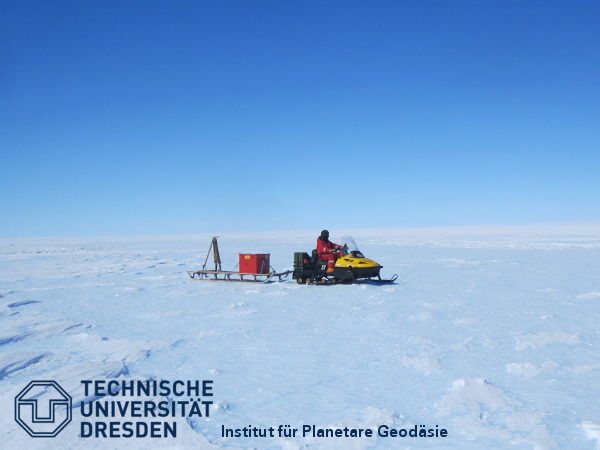In December, we completed all our planned work around the field camp and completed the last of the planned kinematic GPS profiles.
So, with a lot of new observational data we returned to Novo Airbase on 21 December. Before our departure we had to secure our camp in case of bad weather as we wouldn’t be back until January. We shovelled plenty of snow on the snow flaps of the tents, stowed as much as possible inside the tents and stretched all the holding cords tight again.
Over the festive period we stayed in Novo Airbase. After Christmas the much more important day for our Russian colleagues is New Year, which was welcomed with a nice ceremony.
Also ‘Djed Moros’, the Russian Santa Claus, found his way to us in the ice.While we were there, we visited the nearby Russian station Novolazarevskaya in Schirmacher Oasis, where we checked the GPS reference station.
Then in the New Year, we resumed our measurement programme. A one-day trip took us from Novo Airbase approximately 40 km to the south. There we repeated measurements in the accumulation area of Potsdam Glacier where our colleagues had worked several years before. Thus, we hope to acquire data for a repeat analysis.
Also, the AWI polar aircraft that carries the ASIRAS instrument flew over the area. While having wonderful weather we enjoyed the marvellous landscape with nunataks and mountain ranges on the horizon.
Eventually, on 6 January we returned to our field camp. Even from a distance our bright orange tents greeted us.
Thanks to nice weather in our absence we found the camp perfectly unharmed.
Over the following days we could repeat kinematic measurements of four smaller grids that we had already observed in November and December 2014. We will look for seasonal variations when we analyse the repeated.
Post from: Ludwig Schröder and Undine Strößenreuther from TU Dresden in Antarctica as part of ongoing efforts to validate ESA’s CryoSat mission.










Discussion: no comments